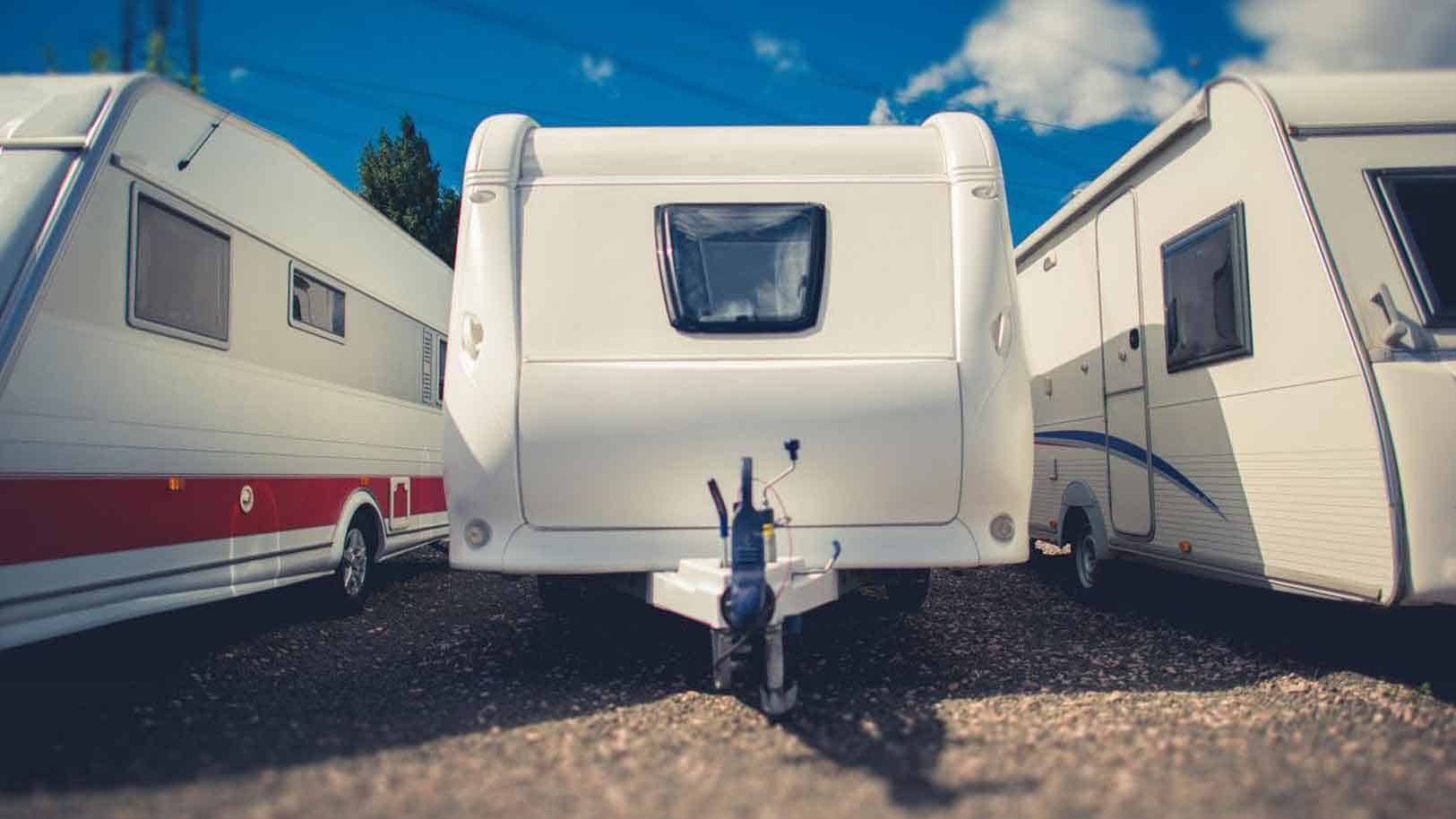Choosing a means of transportation to ensure your full comfort will be one of the most important parts of planning a long trip. If you are now interested in large multi-purpose vehicles with enough necessary conveniences for any outing trips, RVing Trends will give you the most outstanding features of some types of RVs in the following article.
The Trends of RV Travel
Today’s life is gradually making a lot of people become super busy and not even able to spend much time for themselves and their families. Work, earn money, go home to rest, and then continue the same cycle the next day.
Going through those tiring days, have you ever thought of taking a long rest and enjoying a comfortable trip? If you’ve been planning for that, you probably already have your own choice of transportation. You will choose to travel by train, plane, motorbike, car, or an RV with full amenities and facilities for you to experience the trip with a relaxed and peace of mind.
Many people nowadays, as their hobby of exploring and the urge to experience lifetime trips to the fullest to get away from the busy city, have trusted and chosen RVs.
RVs, short for Recreational Vehicles, also known as motorhomes, are individually designed cars with full amenities for people living on long journeys or activities such as summer vacations and camping.
RVs are sometimes used as mobile offices for business travelers and often include customizations such as extra desk space, upgraded electrical systems, generators, and satellite Internet. These features are all cleverly installed to maximize the interior usage space of the vehicle. People can cook, bathe, and entertain themselves outside, but they will often sleep in the RV to ensure safety in unfamiliar places if they don’t want to get a hotel room.
Getting back to history, the first recorded four-wheeled mobile home or RV dates back to the 1920s, though many believe that hand-built versions of this type even existed before that time.
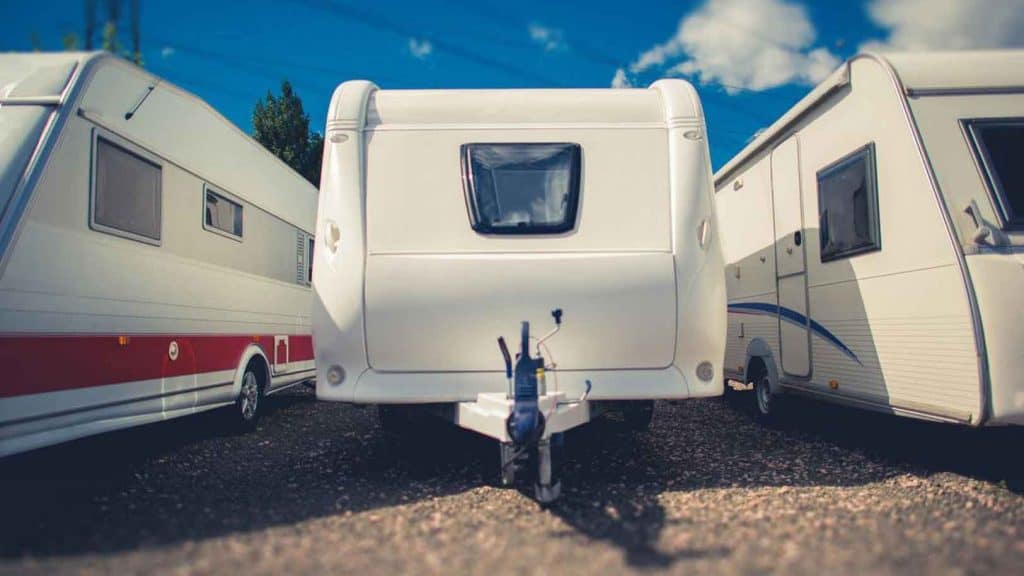
As the trend of traveling and discovering new lands flourished, RV has entered its peak reputation.
With the amenities that an RV offers, it can be your utmost helpful and friendly companion on every long trip. However, when it comes to owning an RV and making sure you get all the hang of it, it’s a whole different story than what you expected.
When reading related articles on the internet on traveling with an RV, you will be able to immediately picture outing scenes of fun and comfort while enjoying relaxing moments with your family. However, the reality of owning one is not so easy. If you want to rent an RV or even buy it, there will be many things to consider, such as the RV classes, price, insurance, storage, durability, and available amenities.
Start learning gradually about the basics of different types of RVs and the benefits and disadvantages of each type. You may then have the right and reassure decisions for yourself on every needed-consider aspect of this vehicle type.
9 Typical RV Styles and What They’re Best Suited For
Based on the overall structure, engine system, and size, experts divide RVs that are drivable or towable into 9 categories with their specific benefits and drawbacks. These types of motorhomes will provide you with more insights to carefully make the best vehicle choice for your trips with your family.
1. Class A RV
The first of all types of RVs we would like to introduce is the Class A RV with the size of a touring bus. It is the largest and probably most expensive RV type on the market as it is fully equipped with all comforts of a typical house. Being driveable and can provide comfortable living facilities to suit the nomadic lifestyle, among our today’s 9 RVs, class A may not be the most popular as it looks a bit huge and unfriendly. However, this bulky vehicle delivers the ideal travel experience just as when enjoying the natural sceneries and lying in your own home.
The authentic “house on wheels” can be fueled with gas or diesel. Typically, the smaller, lighter RVs will run on gas, while the larger and heavier ones run on diesel. Not only versatile in terms of engine fuel, but the A motorhome also varies in length, with the smallest being 25′ and the largest length being up to 46′.
People owning the modern Class A RV can expand their living space by opening the side roof or pulling some parts of the car out while using it for both trailing and driving purposes. The vehicle made for RVing can accommodate as little as 4-6 people family and set a sleeping place for up to 10 people.
Featured by the luxurious interior features and spacious spaces, an RV class A is exactly a portable penthouse, modern, and convenient, and also has a few disadvantages due to its size and price that we will list below.
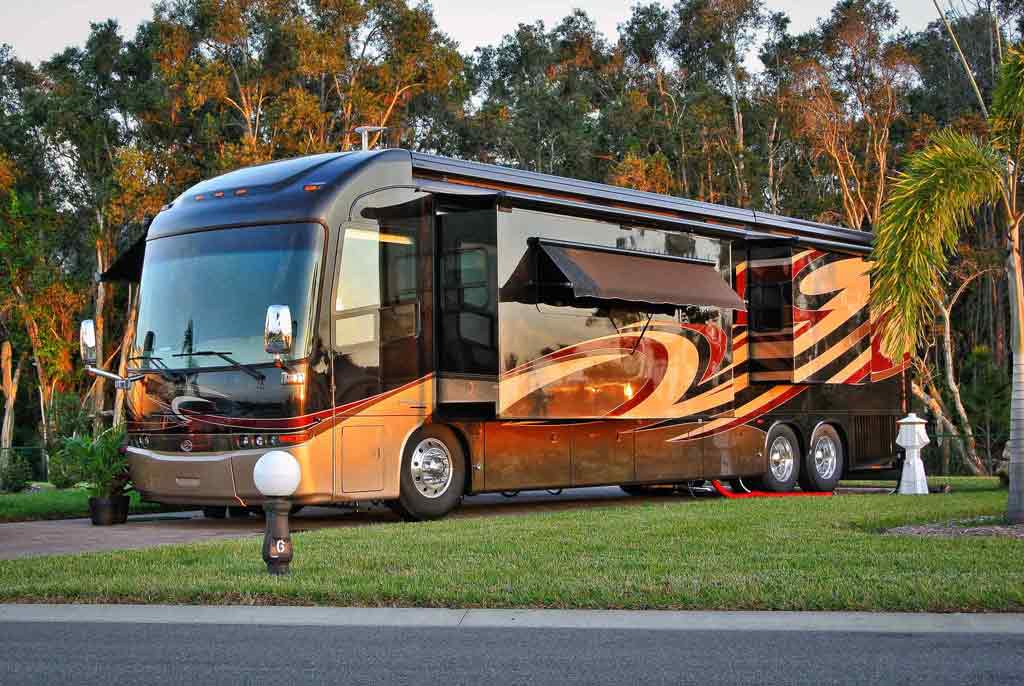
Pros:
- Large and spacious storage and living areas
- Full amenities as a full bathroom, large kitchen, air conditioner, deep freshwater tank, separated eating space.
- Available for both driving and being a trailer behind.
- Suitable for large families or groups of friends.
- High clearance and driving seats ensure great traveling experiences.
Cons:
- Hard to handle on the roads, especially in narrow and mountainous areas.
- Bad gas mileage
- Inconvenient when fixing and inspecting the engine.
- Big windshields make it hard to even the temperatures around.
- Full-filled car fuel is expensive.
You can also browse through some of the prominent A-class RVs available now on the market to understand more about their design, interior, engine, and equipped features. Eventually, you will be surprised at the driving and traveling experiences that major RV companies promise to bring to your family on every trip.
The RVs are popular and have the best quality from long-standing brands such as Newmar King Aire, Winnebago Adventurer, Tiffen Allegro Breeze, Forest River FR3, etc. (Price range: $60,000 – $600,000 or lower if you choose used models)
2. Class B RV (Camper Van)
The second modern motorhome type that everybody is tuning in nowadays is Class B. The length of a typical Class B RV can range from 18′ – 20′ depending on the model and amenities provided. Based on surveys from RV customers, Class B models tend to hold their value better than most types of RVs.
It is the smallest motorized RV with a small but well-equipped kitchen, bathroom, a convertible compact bed, and is a great option for solo travelers or small-sized families (2-3 members). From the outside, you may not be too excited and love this car at first sight because it feels a little cramped and probably cannot guarantee to cover enough facilities for a comfortable and pleasant trip due to its limited size.
However, once you get inside, you will see that the necessary amenities are arranged and stored in a quite smart and neat way. The reversed driver’s seat and the side can form a desk or dining table for your need. Not only that, though this type of RV usually does not have a division between the cabin and the living area, you can always partially extend it with simple tools or install additional tarps for outdoor family activities at any time, in any place.
Standing in the same line as class A, the RV class B motorhomes also offer 2 engine options: diesel and gas. Depending on your needs and car operating habits, you can choose for yourself a suitable model with an engine type that best fits.
You may want to distinguish Class B RVs from convertibles and custom vans having living spaces. The outlook of both types is like a typical van, but class B’s interior has more signature.
With a price range of $80,000 to $200,000, some popular brands of specialized new RV Class B RVs in the US are Roadtrek, Airstream, Advance RV, Free Spirit, Gulf Coast, and Sportmobile. You can also modify and improve models like Toyota Hiace, Ford Transit, and Mercedes-Benz Sprinter to an RV.
Here are some of the Class B Motorhome pros and cons.
Pros:
- Light and easy driving experiences, not as heavy and difficult as driving a Class A oneHigh fuel efficiency, need less maintenance.
- Easy to store and park in not spacious areas
- Access small roads and remote scenic campgrounds.
Cons:
- Small interior space
- Limited storing space and amenitiesIt is your daily vehicle as you can not set up a camp with this RV type.
- Small freshwater, black/grey tank
3. Class C RV (Mini Motorhome)
Class C RV is recently the most-rented one of three main classes of RVs thanks to its full-spec amenities and a decent size that is more suitable for driving and handling compared to class A.
Operating under a bulky motorhome that includes many amenities such as a kitchen, bathroom with shower, a dinette convertible bed, the gas engine of the class C RV is always surprising and loved. Moreover, on winding roads and hilly bends, the car can move quite easily without bringing a sense of fear or insecurity to the driver.
This C-class car looks more compact than class-A, and you may think it doesn’t offer what you need, but it’s more than that. Can accommodate a maximum of 7 people, the vehicle can easily be parked in a campground with limited space, and some models even have convenient slides out.
Diverse in interior design and size, the price of these motorhomes can be available at $60,000 to $250,000 in both old and new status. We can name some outstanding models for your quick references: Winnebago View, Forest River Forester, Tiffin Wayfarer, Thor Compass.
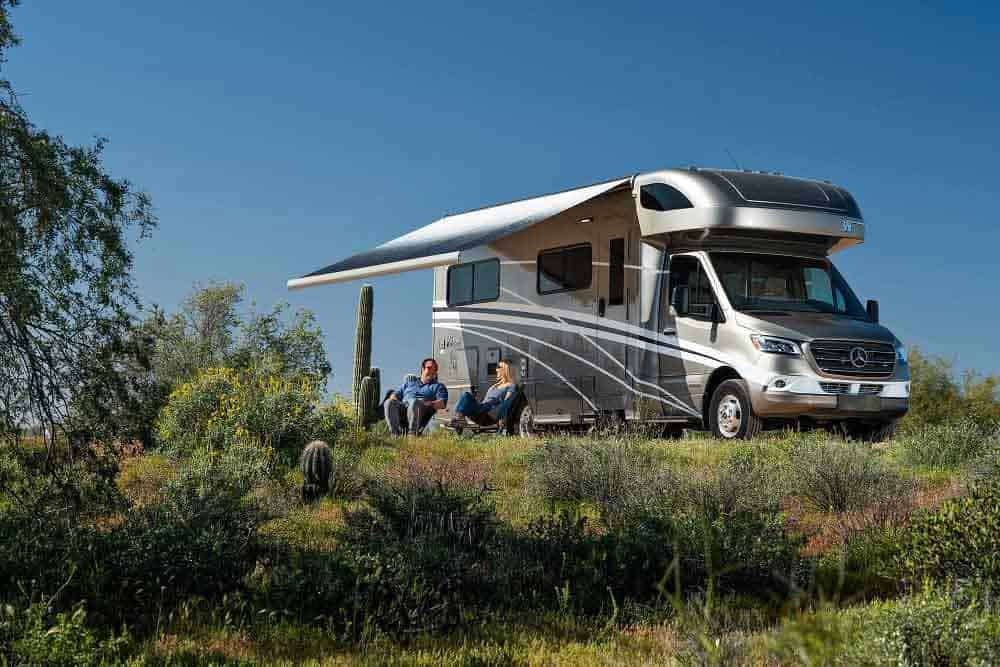
The following table presents the pros and cons of class B RV, check it out now:
Pros:
- More comfortable driving experience compared to class A
- Pretty large black-grey/freshwater holding tanks
- Equip with almost full amenitiesEasy to navigate temperature thanks to the small windshield
Cons:
- Limited size to enter narrow and tight spots
- Minimal interior space with limited living and storing areas.
- Water leaked in the cab-over area.
- Poor gas mileage
4. Travel Trailers
This is an RV type that is considered a wheeled house with full house equipment and utilities. However, it appears without the engine and needs to be towed as it cannot move by itself. Depending on the size, travel trailers will go with a large container tractor, large SUV, even a hatchback, or a sedan.
With a variety of models from 12′ to 40′ in length, among many types of RV trailers, you can always choose for yourself a vehicle that suits your needs but still ensures the most comfort and spaciousness as this one. Because of their convenience and versatility, travel trailers have gradually become one of the most famous and sought-after RVs in the US market.
This typical type of towable RV offers plenty of convenience and space with a kitchen, en-suite bathroom, dining and sleeping areas, or a convertible dinette. Moreover, you can get access to the slide-outs, some extra amenities like a bunkhouse or outdoor kitchen, or separate living and sleeping spaces with larger travel trailers. Not only the well-equipped large ones, but the smaller trailers are also very popular with the RV community for their low prices and excellent gas mileage for each trip.
Do not neglect the trailing preparation process and use your driving techniques flexibly since controlling these bulky vehicles is not easy, especially when traveling on narrow paths and steep mountains.
You can find brand new and comfortable trailers from as little as $15,000 with prominent names like Airstream Classic, Winnebago Micro Minnie, Jayco Jay Flight, Forest River Alpha Wolf.
Here are some pros and cons of travel trailer for your quick reference:
Pros:
- Tons of lightweight models for your choice
- Bring good fuel mileage for your driveable vehicle at the front.
- Pocket-friendly
- No need for occasional engine maintenance.
Cons:
- Cheap version can wear out quickly
- Low weight capacity.
- Limited vehicle’s towing capacity.
- Can be difficult to tow sometimes, especially in cramped areas.
Read more: What’s The Difference Between Fifth Wheel vs Travel Trailer?
5. Fifth Wheels
If you are thinking of starting a full-time life in an RV in the future, fifth wheels could be a very suitable and promising option for you.
The phrase “fifth wheel” is originated from a four-wheel horse-drawn carriage and wagon coupling. You can imagine the tow car in the front is a tractor with 4 solid wheels, and the vehicle without a motor in the back is the last wheel to carry things around. In this case, it is a mobile home. You should note that a fifth-wheel hitch will link a pin-box on the trailer’s front to a u-shaped connection in the vehicle bed.
Compared to a less stable travel trailer, this connection will make the towing experience of this large and cumbersome type of wheel in your vehicle smoother and easier. Although quite heavy and bulky in appearance, in return, of all types of RVs, this trailer offers extremely full of modern and luxurious amenities such as outdoor kitchens, sleeping places, and separate working areas.
In addition, fifth wheels feature two levels, with the main bedroom or a bunk house-multipurpose zone on the upstairs level (the area protruding above the truck bed).
We can name a few out-standers of the fifth wheel class that are trusted by the worldwide RV community: Heartlthland RV Landmark, Keystone Montana, KZ Durango Half-Ton, and Coachmen Chaparral.
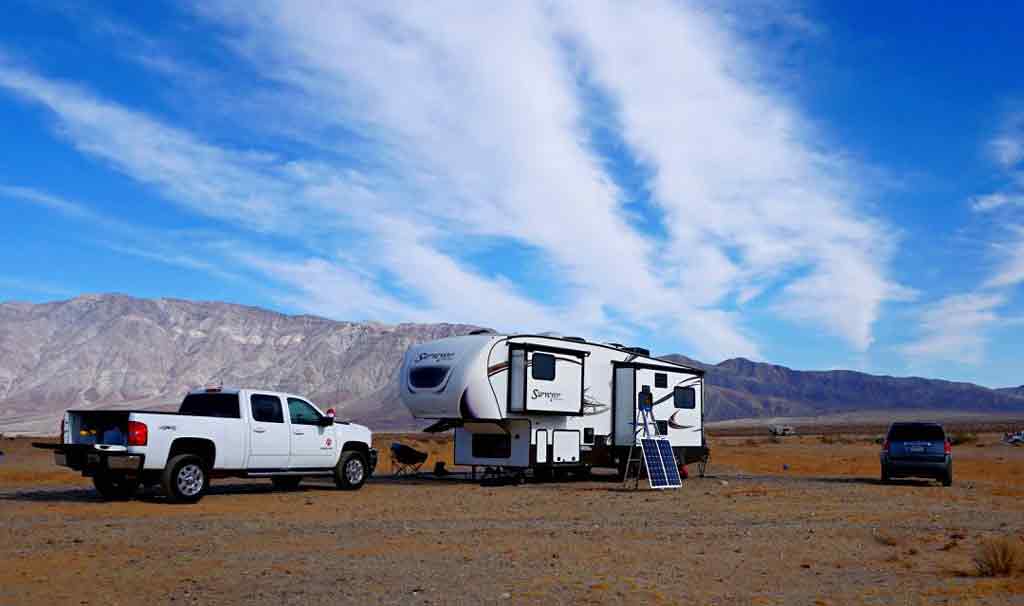
Pros
- The most stable towable RV typeLarge storage space
- Some versions can have multiple bathrooms and bedrooms
- No need for engine maintenance along the way
- Feel like a house the mostSeparate eating, sleeping, and living area
- Full-time living style friendly
Cons:
- Require a high-performance tow vehicle like trucks or large SUVs, which can be very expensive to buy all.
- Difficult to enter and park on small campsites
- Low fuel mileage is the main problem of towing vehicles.
- Need off-site storing space.
- Expensive to maintain some other towing-related parts
Related: Best Fifth Wheel for Full time Living
6. Toy Haulers
Although similar in construction and equipment to travel trailers and fifth wheels, toy haulers distinguish themselves and rise high in an RV niche market with a powerful and agile spirit. It expands the limits of what a conventional RV can offer and secures you with a spacious and airy multi-use area at the back.
With the rear garage, you can have accompanied some toys such as modified motorbikes, dirt bicycles, ATVs, off-road vehicles, canoes, surfboards, and lots of useful items for convenient transportation at destinations and more entertaining tripping experiences with your family.
Overall, one typical toy hauler will offer living space, including a kitchen bar and a compact bed. Go along with it is a garage area lying right at the back that can turn into a resting or sitting place with foldable couches. Moreover, you can lift a toy hauler’s back to act as a ramp for loading equipment or toys. Some versions can even be elevated to create an open-air porch.
If you are a motorcycle racer, a lover of recreation vehicles, sports motorcycles, or tailgaters, this RV type may be the one that fits and bring the most out of your trips.
Some highlighted models in the field that offer well-equipped amenities are Heartland Torque 281, Forest River No Boundaries 19.1, Jayco Octane Super Lite, and Coachmen Freedom Express Blast 271BL.
Pros:
- Large storage space
- Don’t need another separate storage to carry your other vehicles
- Suitable for off-trip camping
- Fit the maximum of 7 people
- Some models have patio foldable desks
Cons:
- Some models can be made with cheap rugged materials
- Need off-site storage
- Pocket unfriendly
- Need large and heavy tow vehicle
- Limited living space
Related: Best Fifth Wheel Toy Hauler For Full Timing
7. Mini Travel Trailers
With the same structure and function as traditional travel trailers, this is a modern miniature version that is well received by many people and deserves to be classified in a separate category.
Fiberglass, clamshell, teardrop, and several small pop-ups all go with these tiny travel trailers. Some mini trailer models are equipped with a compact kitchen inside the cabin. The flexible living-sleeping area with folding chairs and beds is also an added point of this RV trailer.
In the end, small travel trailers are an ideal choice for individuals who want to experience the ease of light and comfortable adventures without stacking lots of stuff. Or some with limited financial status and storage room find it hard to follow the great outdoors activities that required quite many things.
If you fancy this little fellow, you can bring him home with a minimum price of less than $11,000. The more amenities the vehicle offers, the more costly it becomes. Airstream Bambi, Winnebago Micro Minnie, Dub Box are worth-consider models to be your next adventure companion.
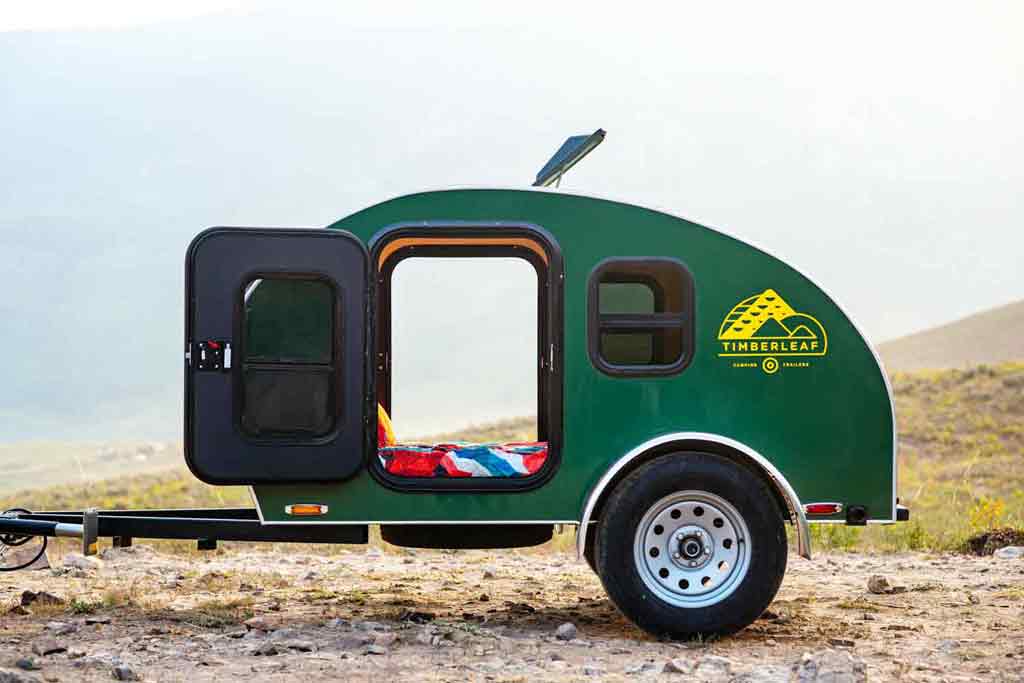
Pros
- Lightweight
- Save gas mileage for your tow vehicle to the maximum extent.
- Affordable
- May fit up to 4 people (best fit for 2)Super easy to handle and park at any campsite, even a national park.
- Can fit rent-garage in local locations.
Cons
- Cramped living and sleeping area
- Small freshwater, black/gray tank.
- Have to do something outside of the vehicle as cooking, cleaning…
8. Pop-Up Campers
Among all types of campers, pop-up campers seem to be one of the main attractors of RV buyers with their pop-up function. Camping pop-ups hold some unique advantages. With this special RV class, aside from a pretty large space, you can save on gas and may not have to invest in a more expensive trailer to travel around.
Being the hot member of the cheapest camping vehicle group in the world of RVs, you can get the necessary amenities from the campers, such as sleeping space for several people, kitchenettes, and entertainment options for a lower price tag.
Now you know the basics about this type of camping vehicle, you can tune in to various models for better traveling experiences with a price range of $10,000 to $25,000, namely Starcraft Comet, Forest River Flagstaff, Jay Sport, or Forest River Rockwood High.
Here are some pros and cons of pop-up campers:
Pros
- Budget-friendly
- Lightweight
- Suitable for tent campers who want to get used to the RV.
- Can carry up to 7 people
Cons
- Expose easily to too high/ too low temperature or bad noise
- Cannot enter some parks
- Small spacesHave low value when you want to sell it.
9. Truck Campers
If you can drive a truck, this will be a great traveling vehicle for you. Truck campers appear in many different sizes and prices, so you can easily find a model you like that fits your needs. This RV type has a design quite similar to Class C RV with living space on the trunk, and obviously, that space is equipped with a cleaning area, a kitchen space, and a foldable compact bed.
Light truck campers may have a pop-up top, while bulkier truck ones are tall enough for people to stand. Moreover, slide-outs are available in some modern and luxurious campers, making them a little more spacious inside the cabin.
Costing around $9,000 to the maximum of $65,000, some best truck campers are Hallmark Ute 8.5, Northern Lite 8-11EX WET, NuCamp Cirrus 920, or Alaskan 7 Cabover.
Pros
- Easy to park and handle on roads
- Can store toyCan use for off-road experiences
Cons
- Have to carry heavier top
- Limited storing and living space
- Some models can be very expensive though have small sizes.
Read more: How to Build a Lightweight Truck Camper
We have just noted down some highlighted characteristics and pros and cons of motorhomes in various shapes and sizes. Hope this piece of information will be helpful to you to some extent.
Once you know the basics of different RV classes, RVing or traveling will become more comfortable as you learn, grow, and adapt to your every adventure.
Types of RVs: Wrapping Up
The design of these mobile apartments transforming a car into comfortable driving campers or separated travel trailers has been part of the living culture of Western society, especially in America. The motorhomes are now available in many types and sizes developed from different automobiles such as vans, medium, large-sized buses, or even trucks.
The charm of wandering on unfamiliar wide roads and the comfort of a familiar home can completely go hand in hand when you are traveling on a vehicle called RV. The love and temptation of people with high traveling spirit for this means of transport are irresistible.
Through the above article, you may feel like you are fighting for a life-or-death decision once you have embarked on the road of exploration and experiencing a nomadic living style. So, before starting the exciting journies ahead or wondering how to begin a full-time RVing, getting to specify all types of RVs will help you a lot in the first place.

